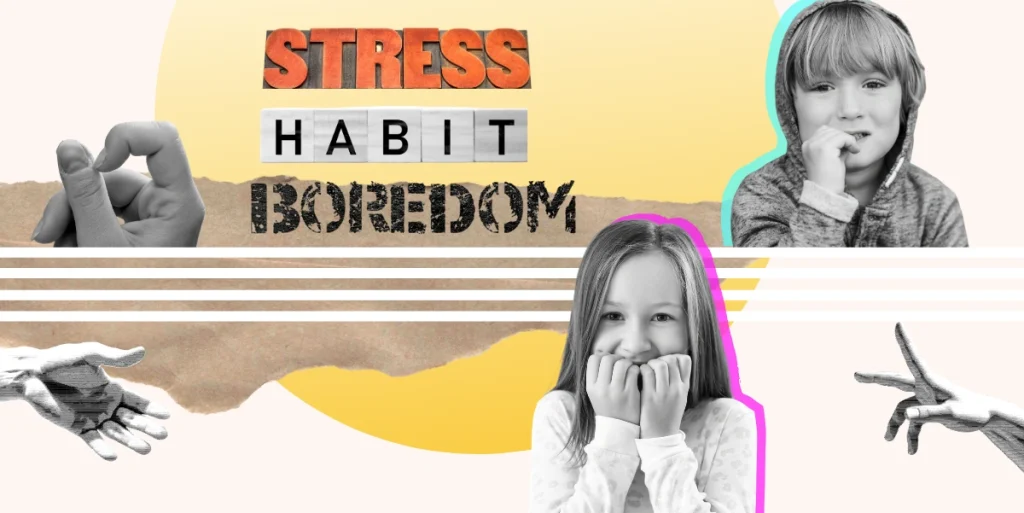Welcome to our cozy corner where we gently untangle the mysteries of a toddler biting nails. It’s a sight many parents know all too well: those little fingers wandering to the mouth, leading to furrowed brows of concern. But fear not! This common habit, while sometimes troubling, is often just a phase. Together, we’ll explore the whys and hows, offering a helping hand through the journey of curbing those tiny chompers. So, let’s dive into understanding and guiding our little ones towards healthier habits with patience, knowledge, and a sprinkle of creativity.
Download and Start Your Free Trial of the Safes Parental Control App
Unraveling Toddler Nail-Biting Mysteries
As tiny teeth meet tiny nails, a parent’s concern often grows. It’s a common tableau: the 3-year-old, absorbed in play, brings a hand to their mouth and begins nibbling away. Nail-biting among toddlers is as common as it is perplexing, leaving many parents wondering about the root of this gnawing habit.
Tiny Fingers, Big Worries: Understanding Toddler Nail-Biting
While nail-biting may seem alarming, especially when a 3-year-old is biting nails until they bleed, it’s often a phase that’s outgrown. The reasons behind this compulsion can range from simple imitation—copying parents or siblings who might absentmindedly bite their nails—to a method of self-soothing under stress or boredom. Sometimes, it’s mere curiosity that drives them to explore the world with their mouths, a holdover from their baby days.
However, it’s not all harmless exploration. Persistent nail biting can lead to sore fingertips, risk of nail infections, and even dental issues as tiny teeth grapple with hard keratin. In some cases, it can affect a child’s self-esteem, especially when coupled with the social aspects of growing up, like academic pressure in preschool settings.

Cultivating Calm: Creating an Environment for Success
To help your toddler, it’s crucial to cultivate a calm and supportive environment. Open communication is key—talk about nail-biting in a language they understand and encourage them to express their feelings. Perhaps they’re mimicking someone or something they saw, or maybe it’s a sign of anxiety. For how to stop anxiety nail picking, it’s essential to address the root cause: the anxiety itself.
Setting realistic expectations is also vital. It’s not about immediate cessation but gradual progress. Patience will be your ally in this journey. For instance, understanding what is the phobia of people can help you recognize if social situations are triggering the nail-biting. If that’s the case, gently preparing your toddler for social interactions can make a world of difference.
Healthline suggests that while it’s tempting to scold or punish a child for nail-biting, it’s more effective to offer praise when they manage not to do it, reinforcing positive behavior rather than punishing the negative.
In the quest for how to stop a toddler from biting nails, remember that each child is unique. What soothes one child’s nibbling nerves may not work for another. It’s about finding the right balance and the right strategies, such as how to stop picking your nails through distraction techniques or substituting the habit with a more benign one.
In the end, your toddler looks to you for guidance and reassurance. With your support, they can overcome the nail-biting phase and move on to more constructive ways to explore and engage with their ever-expanding world.

Tiny Triumphs: Curbing the Nail-Biting Habit in Toddlers
Tiny fingers can create big worries when they’re constantly in a toddler’s mouth. For parents witnessing their 2-year-old biting nails until they bleed or a 4-year-old toddler biting nails out of habit, it’s not just about aesthetics; it’s a call to action for healthier habits.
Nurturing Nail Health
The journey to healthy nails begins with a demonstration. Show your little ones how to care for their nails, making it a part of their routine. Explain why keeping nails clean and trimmed is important, and make it fun! Perhaps a special towel or a colorful nail brush just for them can make the experience more engaging.
Addressing Triggers and Underlying Causes
Understanding what causes irritability or prompts a child to nibble on their nails is crucial. Is your highly sensitive child seeking comfort through nail-biting, or is it a boredom buster? BabyCentre notes that nail-biting in young children is rarely a sign of a serious problem. It’s often just a habit, like thumb-sucking, that helps them feel secure. Offer alternative activities that soothe or occupy their busy hands and minds, like playdough for squishing or puzzles for solving.
Positive Reinforcement and Encouragement
When it comes to changing behavior, positive reinforcement can be a game-changer. Celebrate the moments when your toddler chooses not to bite. Simple praises or a sticker chart can work wonders in motivating them. Remember, the goal is to make not biting their nails more appealing than the habit itself.
Distraction Techniques
Distraction is a powerful tool. When you see your toddler’s hand drifting towards their mouth, redirect them with a sensory toy or engage them in a hands-on activity. It’s about replacing the nail-biting with something equally satisfying but less harmful.

Making a Routine
Consistency is key to breaking the nail-biting habit. Establish a routine that includes the strategies you’ve adopted, like applying bite-averting nail polish, which can serve as a physical reminder for your child not to bite. Make sure everyone involved in your toddler’s care is on the same page to maintain a united front.
Bumps on the Road
Setbacks are part of the process. If your toddler reverts to biting, handle it with patience and understanding. However, if the habit persists and causes significant distress, or if you’re concerned about how to stop biting the skin around nails effectively, it might be time to seek professional help.
Home remedies for child nail-biting, like bitter-tasting nail polish, can be a starting point, but sometimes the underlying issues, such as anxiety, may require a professional’s touch. Remember, how to stop picking nails isn’t just about the physical act—it’s about addressing the emotional needs behind it.
In the end, every small step towards not biting is a victory. With love, patience, and the right strategies, your toddler can overcome the urge to bite and grow into healthy nail care habits that last a lifetime.

Guardians of Growth: Safes App for Mindful Parenting
Embark on a proactive parenting journey with Safes for iOS or Safes for Android, your partner in creating a balanced digital environment for your little one. While you nurture their offline habits, like moving past toddler nail-biting, let Safes assist you in managing screen time, securing social platforms, and filtering the web to cultivate a safe online experience. With Safes, you’re not just curbing one habit, but fostering a holistic approach to your child’s well-being. Download Safes today and be the guardian of your toddler’s growth, both online and off. Start your free trial with Safes and get access to resources that support positive behavior changes.
Signing Off on Toddler Nail-Biting Adventures
And there we have it—our journey through the tiny trials of toddler biting nails comes to a close. Remember, each little finger that finds its way to those pearly whites is an opportunity for learning and growth, for both you and your toddler. With a dash of patience, a dollop of understanding, and our shared tips, you’re well on your way to nurturing healthier habits. So, cheer on those small victories, because in the world of tiny triumphs, every moment of not biting is a step towards blossoming confidence and well-being.
Your Child’s Online Safety Starts Here
Every parent today needs a solution to manage screen time and keep their child safe online.
Without the right tools, digital risks and excessive screen time can impact children's well-being. Safes helps parents set healthy boundaries, monitor activity, and protect kids from online dangers—all with an easy-to-use app.
Take control of your child’s digital world. Learn more about Safes or download the app to start your free trial today!




